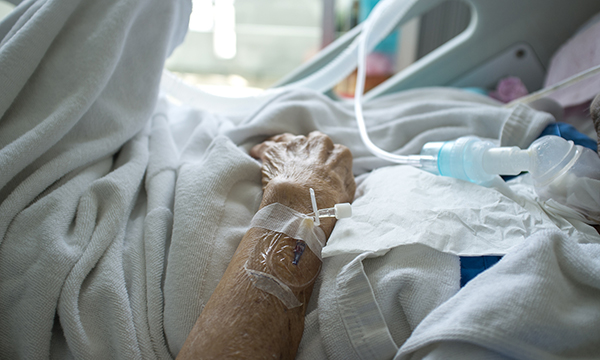
"A lot of hospital deaths that were attributed to the normal course of disease may have been the result of diagnostic error," said Gail M. Horvath. A patient safety analyst with the ECRI Institute.
Last week, the ECRI Institute released its top 10 list of patient safety concerns for 2018. At the top of the list for the first time ever was diagnostic error. ECRI is an independent, nonprofit, healthcare-assessment organization.
Why is this a big deal? The report is evidence that diagnostic error is finally being recognized as a top patient-safety issue. By some accounts, the modern patient-safety movement started in the 1990s, spearheaded by people like former astronaut James Bagian, who improved quality within the Veteran Affairs system, and Harvard professor Lucian Leape, who studied the cognitive and organizational roots of medical errors.
In order to capture the public’s attention, patient safety advocates in those days focused on highly visible errors such as drug dosing errors and wrong-site surgery. Understandable, but sometimes it is the least visible errors that do the most harm. For example, consider this story of a young woman who ended up in a coma in an intensive care unit, and though she ultimately survived, she lost the ability to ever bear children.
This particular case started with an erroneous lab test result, and was compounded through a series of misunderstandings and cognitive errors on the part of her physicians. If this had been a simple case of malpractice, it probably would have made national news. Instead, it was a complicated system-level problem without an easy point of blame. (Which isn’t to say that the attorneys couldn’t find someone to pin the blame on; ultimately the hospital and the manufacturer of the laboratory instrument had to share a $16 million tort judgment.)
The technologies available in modern clinical laboratories and radiology departments are truly amazing. This is not to say that the devices and technologies are always perfect, but rather that most of the errors arise either upstream or downstream of the tests themselves.
The National Academy of Medicine (formerly Institute of Medicine) issued a report in 2015 on improving diagnosis in healthcare. Interestingly, it focused more on communication processes than on testing technology. The technologies available in modern clinical laboratories and radiology departments are truly amazing. This is not to say that the devices and technologies are always perfect, but rather that most of the errors arise either upstream or downstream of the tests themselves. To name a few, this includes:
- Ordering the wrong test.
- Ordering the right test, but at the wrong time.
- Ordering the right test at the right time, but on the wrong type of specimen.
- Misunderstanding the significance of a test result.
At ARUP Laboratories, we are committed to improving the quality of laboratory diagnosis. We put a great deal of attention and resources into controlling analytic quality, and we have the highest standards for specimen integrity in the industry. We also go to great lengths to ensure that the right tests are ordered, and that physicians understand what the results do and do not say.
One way to ensure this is by providing ARUP Consult, a free online tool to guide in lab test selection and interpretation. It is accessed tens of thousands of times per month by healthcare workers across the United States. We also host hundreds of local and regional test directories on behalf of our laboratory clients, which contain ordering recommendations and links to additional clinical and technical information on the tests.
To improve medical diagnosis, we need to engineer and improve all aspects of the diagnostic process, from taking a thorough patient history to the selection of appropriate tests to proper incorporation of test results into a summary that’s shared with the patient.
Clinical laboratories have productive roles to play throughout this process. As laboratory professionals, we need to be experts in diagnosis more broadly, not just in the performance of individual tests.
By Brian Jackson, MD, MS, Medical Director, Business Development, IT and Support Services, ARUP and Associate Professor of Pathology (Clinical), University of Utah.
Related blog
"Attaining Six Sigma Levels in the Laboratory: Here’s What We Learned"
















